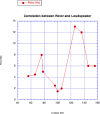The Notched Stick, an ancient vibrot example
- PMID: 31242233
- PMCID: PMC6594746
- DOI: 10.1371/journal.pone.0218666
The Notched Stick, an ancient vibrot example
Abstract
An intriguing simple toy, commonly known as the Notched Stick, is discussed as an example of a "vibrot", a device designed and built to yield conversion of mechanical vibrations into a rotational motion. The toy, that can be briefly described as a propeller fixed on a stick by means of a nail and free to rotate around it, is investigated from both an experimental and a numerical point of view, under various conditions and settings, to investigate the basic working principles of the device. The conversion efficiency from vibration to rotational motion turns out to be very small, or even not detectable at all, whenever the propeller is tightly connected to the stick nail and perfectly axisymmetrical with respect to the nail axis; the small effects possibly observed can be ascribed to friction forces. In contrast, the device succeeds in converting vibrations into rotations when the propeller center of mass is not aligned with the nail axis, a condition occurring when either the nail-propeller coupling is not tight or the propeller is not completely axisymmetrical relative to the nail axis. The propeller rotation may be induced by a process of parametric resonance for purely vertical oscillations of the nail, by ordinary resonance if the nail only oscillates horizontally or, finally, by a combination of both processes when nail oscillations take place in an intermediate direction. Parametric resonance explains the onset of rotations also when the weight of the propeller is negligible. In contrast with what is commonly claimed in the literature, the possible elliptical motion of the nail, due to a composition of two harmonic motions of the same frequency imposed along orthogonal directions, seems unnecessary to determine the propeller rotation.
Conflict of interest statement
The authors have declared that no competing interests exist.
Figures









References
-
- La estatua egipcia que se mueve por sì misma. 2013 Jun 27 [cited 12 February 2019]. In: Mitosytimos.blogs.com [internet]. Spanish. Available from: http://mitosytimos.blogspot.it/2013/06/la-estatua-egipcia-que-se-mueve-p...
-
- Petri PA. Vibration-induced rotation, B.Sc. Thesis, The Massachussets Institute of Technology. 2001. Available from: https://dspace.mit.edu/handle/1721.1/36110
MeSH terms
Associated data
LinkOut - more resources
Full Text Sources

